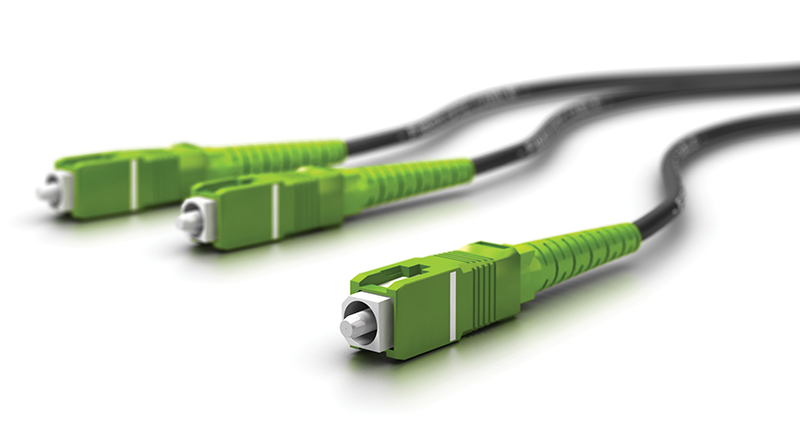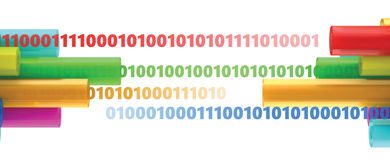Fiber Optic Performance for Ethernet Networks
By Steven Harris
In today’s optical technology, Ethernet provides an economical and reliable digital solution to operating on a TDM network. Ethernet II includes framing for digital binary, Layer 2 addressing, class of service (CoS) and specifies the data within a frame. Typically, gigabit Ethernet refers to such standards as IEEE 802.3ab, delivering a billion bps or 1 GigE. In Ethernet optics, the 1000BASE-X naming convention is used to refer to a 1 GigE connection over fiber. Under 1000BASE-X, there are a few varieties, leveraging diverse media wavelengths, proprietary deployments, connector types and distance limits.
In addition to Ethernet in the LAN, a form of Ethernet from the MEF Forum exists for service providers. The MEF Forum defines a carrier Ethernet network (CEN). A CEN is a more reliable Ethernet LAN, allowing operators to scale their network offerings for WAN/MAN circuits. While a CEN may share a variety of transport technologies and mediums to build long distance QoS networks, operators typically leverage optics.
Operators define how the optical medium will be used, as well as the type of Ethernet service provided over their fiber. By using specifications like a CEN, it allows a provider to define a type of service used for the Ethernet protocol and CEN equipment. The equipment, a user network interface (UNI), is the demarc between the provider edge (PE) and customer edge (CE). Typical service offerings by providers are Ethernet line (E-line) and Ethernet LAN (E-LAN). An E-line is a point-to-point (ptp) Ethernet link, while the E-LAN service is a multipoint-to-multipoint Ethernet virtual connection (EVC).
Under the E-line service offering, operators typically deploy an Ethernet private line (E-PL) or an Ethernet virtual private line (E-VPL). The E-PL is a port to port-based single service E-line, no EVCs on the UNI. In the E-VPL, multiple EVCs are used on a UNI, creating multiple point-to-multipoint connections.
While using defined Ethernet services is an advantage for operators, there are also service management capabilities.
Operators who deploy specialized Ethernet networks will be required to provide performance verification for customers. As we know, business customers require a reliable network, limited outages and an optimal bandwidth profile (BWP). For example, a 500 Mbps BWP must deliver 500 Mbps, and be verified against a service level agreement (SLA). The SLA will be used by the provider and customer to agree on the definition of a 500 Mbps service circuit, hold the provider accountable and to enforce utilization of the customer BWP.
Providers that use SLAs must have mechanisms to verify performance over optical Ethernet circuits. While ping, traceroute and BERT exist, these tests are not designed to properly examine an Ethernet circuit. They do not address specific items of an SLA, either (e.g., CBS). The IETF created RFC 2544, used as an IP / Ethernet pipe test, defining several performance areas and reporting. 2544 was designed for device performance, not a true Ethernet service test. While 2544 does address throughput, frame delay and frame loss, it does not address many SLA specifics and multiple service flows (e.g., E-LAN). On top of that, 2544 is a slow serial test. The ITU created the Y.1564 service activation methodology (SAM), improving on 2544. The Y.1564 or SAM test was designed to ensure SLAs are met by testing Layer 2 Ethernet frames. The SAM test addresses multiple service flows, frame delay variation (FDV) and the BWP sold! Finally, in addition to testing Y.1564 the IETF created RFC 6349 for Layer 4 TCP benchmarking of efficiency and buffer delay.
It is important for service and business technicians to remain current with industry trends, service and performance verification. If you are interested in business services, be sure to visit SCTE.org/BCSS for information on becoming a certified professional!

Figure 1. Ethernet line vs. Ethernet LAN over fiber optics
 Steven Harris
Steven Harris
Executive Director, Technical Sales, Learning & Development
SCTE•ISBE
sharris@scte.org
Steve is an international SME and thought leader, and the executive director of education and business development for SCTE·ISBE. He is responsible for overseeing the architecture and evolution of educational programs, credentialing, and customized career progressions, as well as business development and partnerships. His team is responsible for an education library that is now 900+ modules, designed to drive business results. With more than 30 years in education, he has taught much of the content of the library, with a dynamic approach to the delivery of highly complex topics.
Shutterstock




